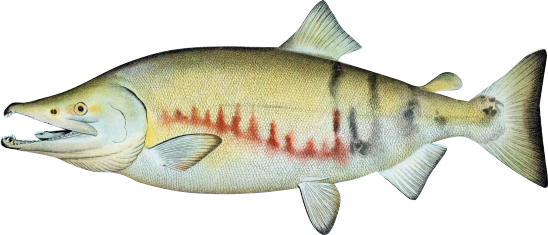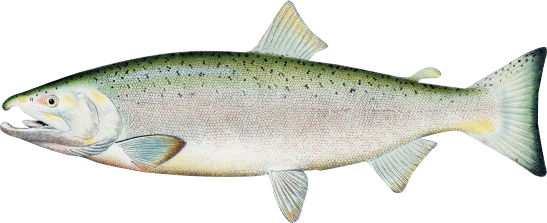Our salmon season runs from mid-May through September. We begin our season at the mouth of the Copper River targeting sockeye salmon. In June, we transition out to Prince William Sound for the keta salmon run. We finish our season back at the Copper, catching late season coho salmon. When you buy salmon from Copper Valley Fish Collective, you’re buying a share of our season’s catch. Every year is a little different, and our salmon offerings will reflect this natural rhythm. This is truly a wild salmon run!
The jury remains out, even in this household, as to which salmon is “best.” Each species has its own distinctive attributes, so you’ll have to decide for yourself! We often debate the merits of each species, so here are a few of our thoughts to help guide your own salmon exploration.
Sockeye Salmon (a.k.a. Red Salmon)
Scientific name: Oncorhynchus nerka

The sockeye of the Copper River are traditionally the first to return to Alaska each year, which marks the start of the commercial salmon season. On opening day, these prized fish get a first-class airlift to restaurants across the United States. From fishmongers to gourmet chefs, “Copper River reds” are celebrities of the salmon world.
As adults they feed on crustaceans, which gives their flesh a brilliant (surprise!) red color. Sockeye is undeniably the most firm of the salmons, and will retain its characteristic color even when cooked. Because of these features we love to have it grilled straight-up, and it also makes for a sharp-looking bowl of poke.
Keta Salmon (a.k.a. Chum Salmon, Dog Salmon)
Scientific name: Oncorhynchus keta

The name chum is derived from the pidgin word tzum (meaning “striped”), used between early white traders and natives of the Pacific Northwest. A chum’s scales grow increasingly striped as they draw near to their spawning grounds, darkening and often taking on dark green or even purple hues.
This medium-sized Alaskan salmon is probably the most underrated for eating. A fine fish to fillet (and a staple meal on our boat in the summer!), it is also represented on most sushi menus: your salmon roe ikura was most likely harvested from a chum. The meat itself is less oily when compared to the other salmons, and should be cooked accordingly. Some like to use a savory marinade to maintain moisture, others prefer lightly cooked steaks.
Coho Salmon (a.k.a. Silver Salmon)
Scientific name: Oncorhynchus kisutch

Coho salmon are the largest fish we offer, and thus the thickest cuts you may find in your share. These wild fighters are the reason you’ll see rod-and-reel fisherman lining the banks of Copper River sloughs in September. On hook or in the net, their metallic silver-streaked tails are easy to spot.
Their fillets are hefty compared to sockeye or chum, making them well-suited to our favorite cut for the pan, the butterfly. We tend to use these versatile rose-colored portions in curries, chowders, and fish tacos. And as always, a little salt, pepper, and oil on these babies makes for an impressive meal.